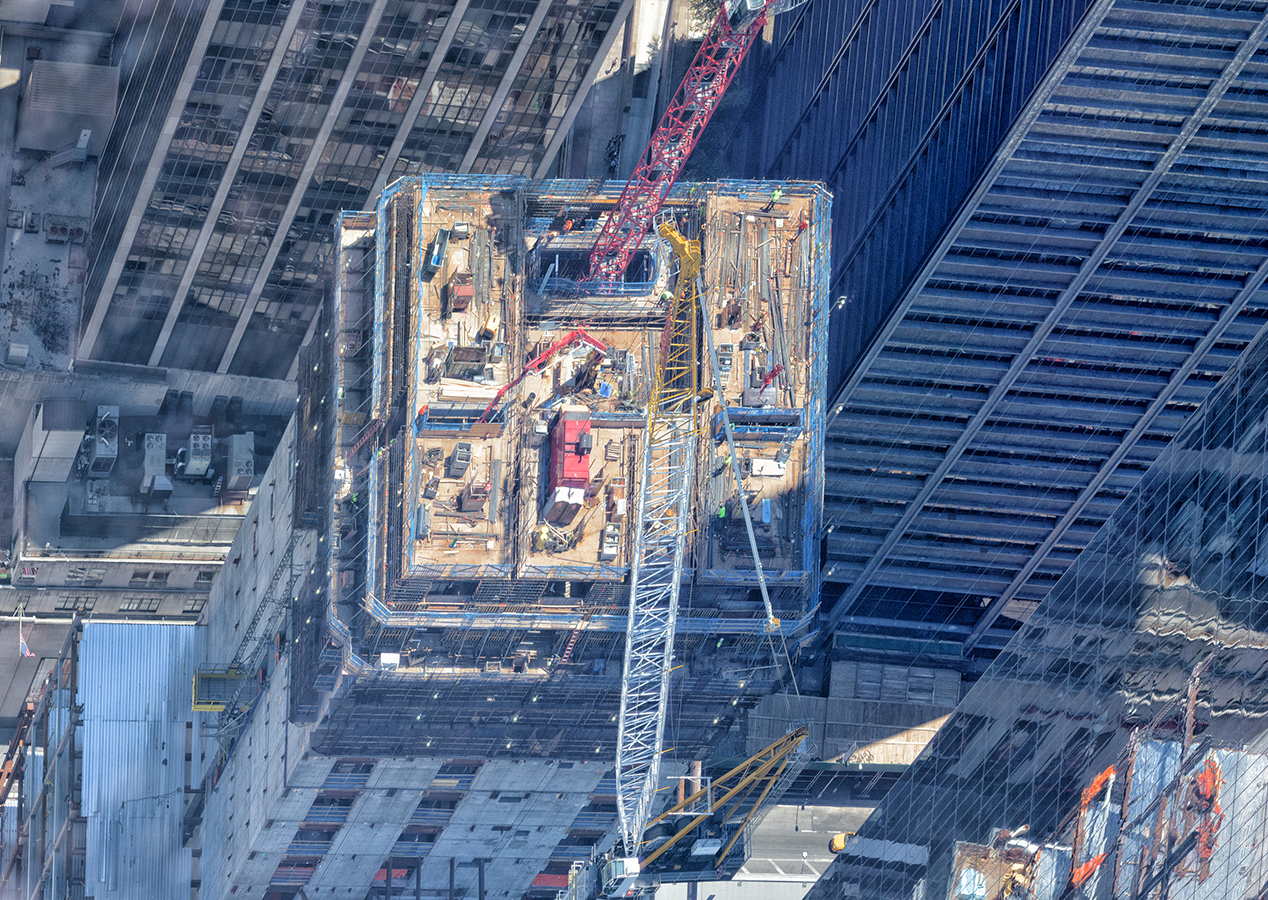How resilient building construction mitigates damage caused by natural disasters

Natural disasters seem to be happening more frequently and causing more damage than ever. As a result, the construction industry is developing and using new technology and materials that can withstand these catastrophic events. Construction of resilient buildings can help prevent loss of life, mitigate financial impact and speed up recovery after an event.
The cost of natural disasters is staggering, as shown by this list (in 2021 dollars, based on several estimates) of the 12 most costly natural disasters in U.S. history.
- Hurricane Katrina (2005) – $167 billion to $182.5 billion
- Hurricane Harvey (2017) – $133 billion to $141 billion
- Hurricane Maria (2017) – $96 billion to $102 billion
- Hurricane Sandy (2012) – $74.5 billion to $80 billion
- Hurricane Ida (2021) – $65 billion to $75 billion
- Hurricane Irma (2017) – $53.5 billion to $69 billion
- Hurricane Andrew (1992) – $51.3 billion to $54.3 billion
- Drought and Heatwave (1988) – $45.4 billion to $115.7 billion
- Great Flood of 1993 – $38.6 billion to $40.9 billion
- Hurricane Ike (2008) – $37.5 billion to $39.6 billion
- Drought and Heatwave (2012) – $34.8 billion to $64.4 billion
- Northridge Earthquake (1994) – $24 billion to $93 billion
Source: NOAA’s National Centers for Environmental Information, Statista, Wikipedia.
To protect lives, investments and the economy, resilient construction is becoming increasingly common, especially in areas that are prone to natural disasters. Every dollar invested on mitigation measures—adopting and strengthening building codes, upgrading existing buildings, and improving utilities and transportation—saves $13 in recovery costs, according to the National Institute of Building Sciences.
What Is Resilience in Construction?
Resilience refers to the ability to absorb or avoid damage without suffering complete failure. A resilient structure can resist a natural disaster with minimal damage and disruptions during and after the event.
Why We Need Resilient Building
As the frequency and destructiveness of natural disasters increases, the adaptation, retrofitting and design and construction of resilient buildings and infrastructure systems becomes more necessary than ever. Resilient construction helps keep people and property safe and enables communities to continue functioning and recover quickly after adverse events.
Resilient Buildings vs. Natural Disasters
Most resilient structures are designed and built to resist high winds, floods, earthquakes or wildfires.
High-Wind Resistance
High winds are the leading cause of damage due to hurricanes and tornadoes. The Saffir-Simpson hurricane wind scale classifies hurricanes into five categories ranging from Category 1 storms, with sustained wind speeds ranging from 745 mph to 95 mph, to Category 5 storms, with sustained winds of over 157 mph. Tornadoes have higher wind speeds, ranging from 110 mph to over 300 mph. Wind speeds that exceed 100 mph can cause catastrophic damage to buildings, such as ripping off roofs and walls and lifting buildings off their foundations.
The following practices help improve the wind resistance of structures:
- Building per Insurance Institute for Business and Home Safety (IBHS) Fortified standards.
- Retrofitting buildings with roof straps to keep roofs from detaching.
- Installing impact resistant-certified windows and doors.
- Installing roll-down or accordion storm shutters.
Flood Resistance
Floods can happen anywhere it rains. Structures in flood areas should be built to resist water, especially basements and first floors. If possible, they should be elevated and their foundations be secured against hydrodynamic forces.

Flood resistance strategies include the following:
- Relocating buildings away from areas that pose a serious flooding risk.
- Following Federal Emergency Management Agency (FEMA) building codes for floods.
- Elevating buildings by placing them on stilts or raising the foundation above flood risk.
- Installing breakaway walls in ground-level floors used for parking or storage to let flood waters through.
- Using permeable pavement that allows water to be absorbed by the soil beneath it.
- Building floodwalls—permanent concrete or earthen barriers placed outside to prevent water from getting in.
Earthquake Resistance
Earthquakes can make structures collapse in a matter of seconds. Reinforced concrete construction can withstand wind storms but do not perform well during earthquakes, when resilience is primarily meant to save lives.
To make structures more resilient against earthquakes, builders are using ductile construction materials and techniques that help the buildings absorb vibrations and sustain damage without losing their strength or stability.
Here are some steps builders can take to improve the earthquake resilience of structures:
- Follow the National Earthquake Hazards Reduction Program’s “Recommended Seismic Provisions for New Buildings and Other Structures,” published by FEMA and prepared by the Building Seismic Safety Council (BSSC) of the National Institute of Building Sciences. These provisions are used by codes and standards development organizations to formulate seismic-resistant design and construction requirements.
- Build structures with the following characteristics:
- stable foundations
- continuous load paths
- adequate stiffness and strength
- regularity
- redundancy
- ductility and toughness
- ruggedness
- Follow the Structural Engineers Association’s “Blue Book Seismic Design Recommendations.” The association recommends lateral force requirements with the following general set of performance characteristics:
- Resist a minor level of earthquake ground motion without damage.
- Resist a moderate level of earthquake ground motion without structural damage, but possibly experience some nonstructural damage.
- Resist a major level of earthquake ground motion having an intensity equal to the strongest either experienced or forecast for the building site without collapse, but possibly with some structural as well as nonstructural damage.
- Use earthquake resistant materials and techniques such as steel, shear walls, braced frames, base isolation, moment resisting frames, energy dissipating devices (such as dampers), fabric panels and pendulums.
Wildfire Resistance
Fire-resistant buildings are extremely important in areas prone to wildfires, typically out West, where dry bush, wildland and forests tend to catch fire that is spread rapidly by strong winds.
Here are some of the strategies builders use to improve the fire resistance of structures:
- Using wood treated with fire-retardant chemicals.
- Using brick when building new structures.
- Installing multi-pane windows or tempered safety glass.
- Use fireproof shutters to protect large windows and glass doors from radiant heat.
- Using Class A roof material, such as tile, slate or asphalt with an underlayment, or Class B pressure-treated shakes and shingles.
- Ensuring that the driveway or other access is clear of flammable vegetation and wide enough for emergency vehicles.
- Installing fire sprinklers throughout the building and spark arrestors in chimneys and stovepipes.
- Enclosing or boxing in eaves, soffits, decks and other openings in the structure.
- Using fine wire mesh to cover vents, crawl spaces and spaces underneath porches and decks.
Building Products Designed to Withstand Natural Disasters
- Steel
- Concrete
- Lead-rubber bearings
- Rocking frames
- Reinforced glass
- Trusses
- Shear walls
- Hip roofs
- Tie-down straps
- Reinforced doors
- Damping systems
- Invisibility cloaks
- Shape memory alloys
- Solid pipes
- Furniture straps/anchors
Final Word
Natural disasters reportedly are becoming more frequent and more intense. As a result, construction of disaster-resilient buildings is becoming more of a necessity and less of an extra effort. It may be more costly than standard construction, but investing ahead of a disaster pays off when compared to the cost of repairing and/or replacing severely damaged structures.
